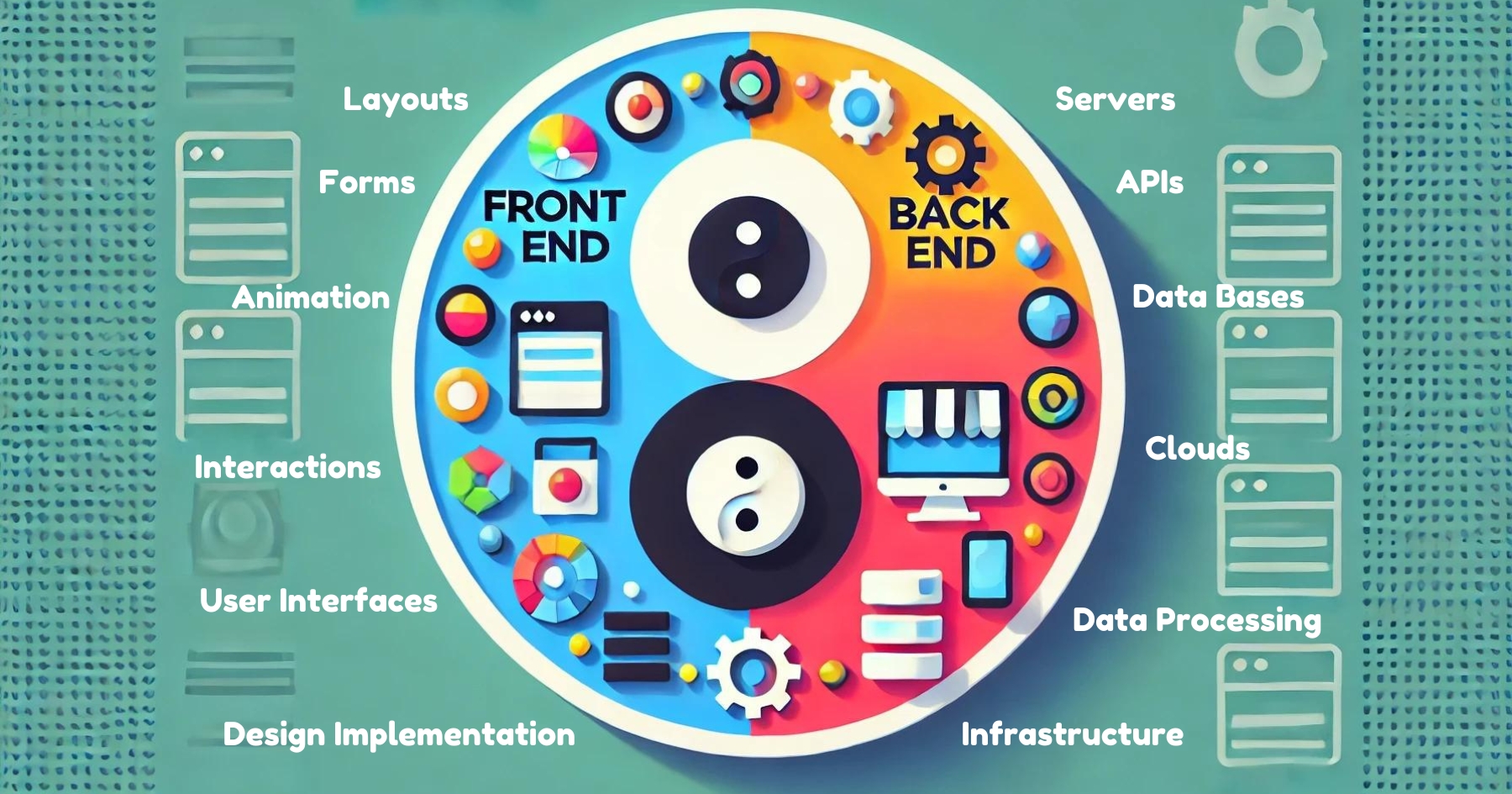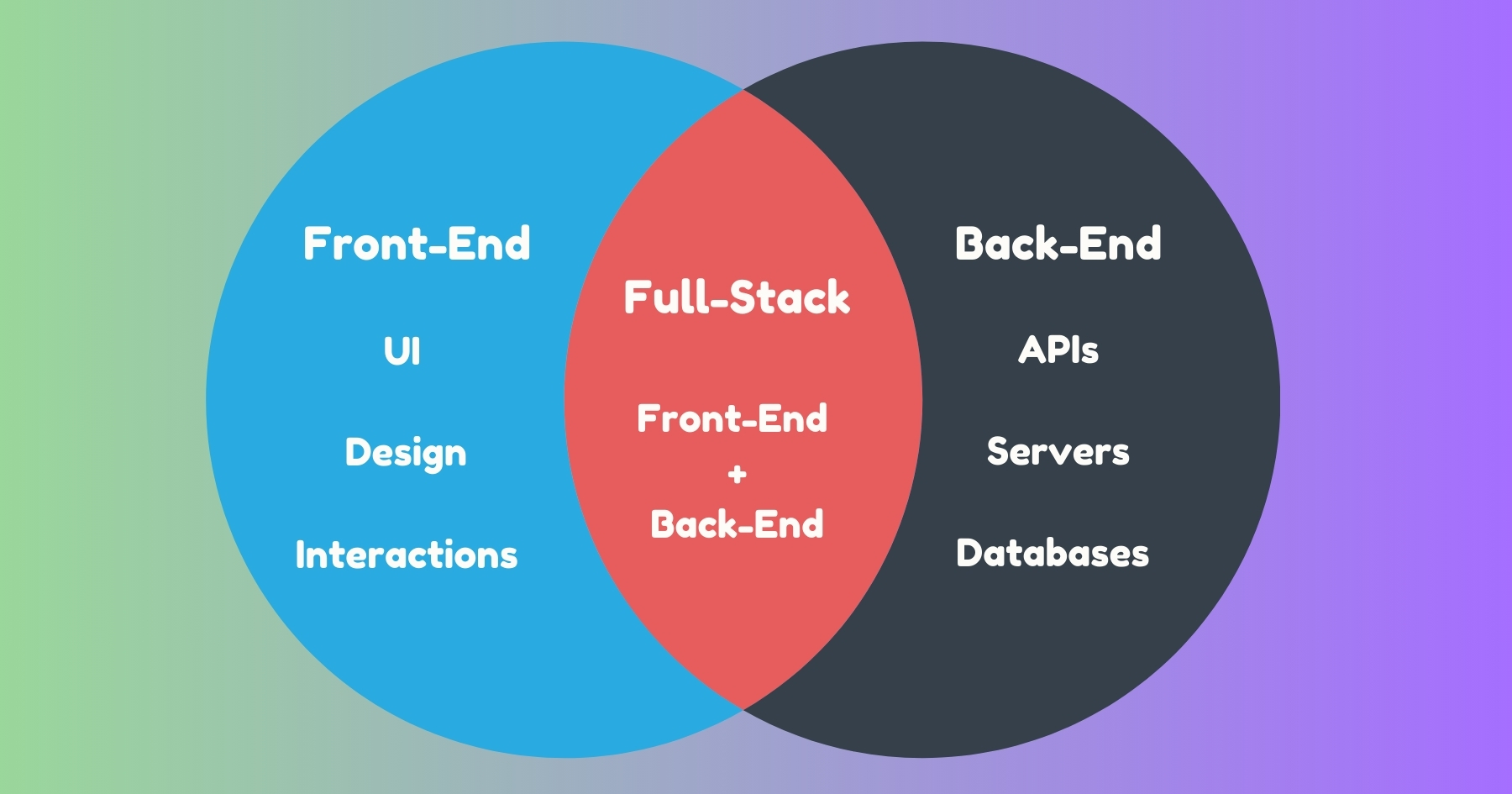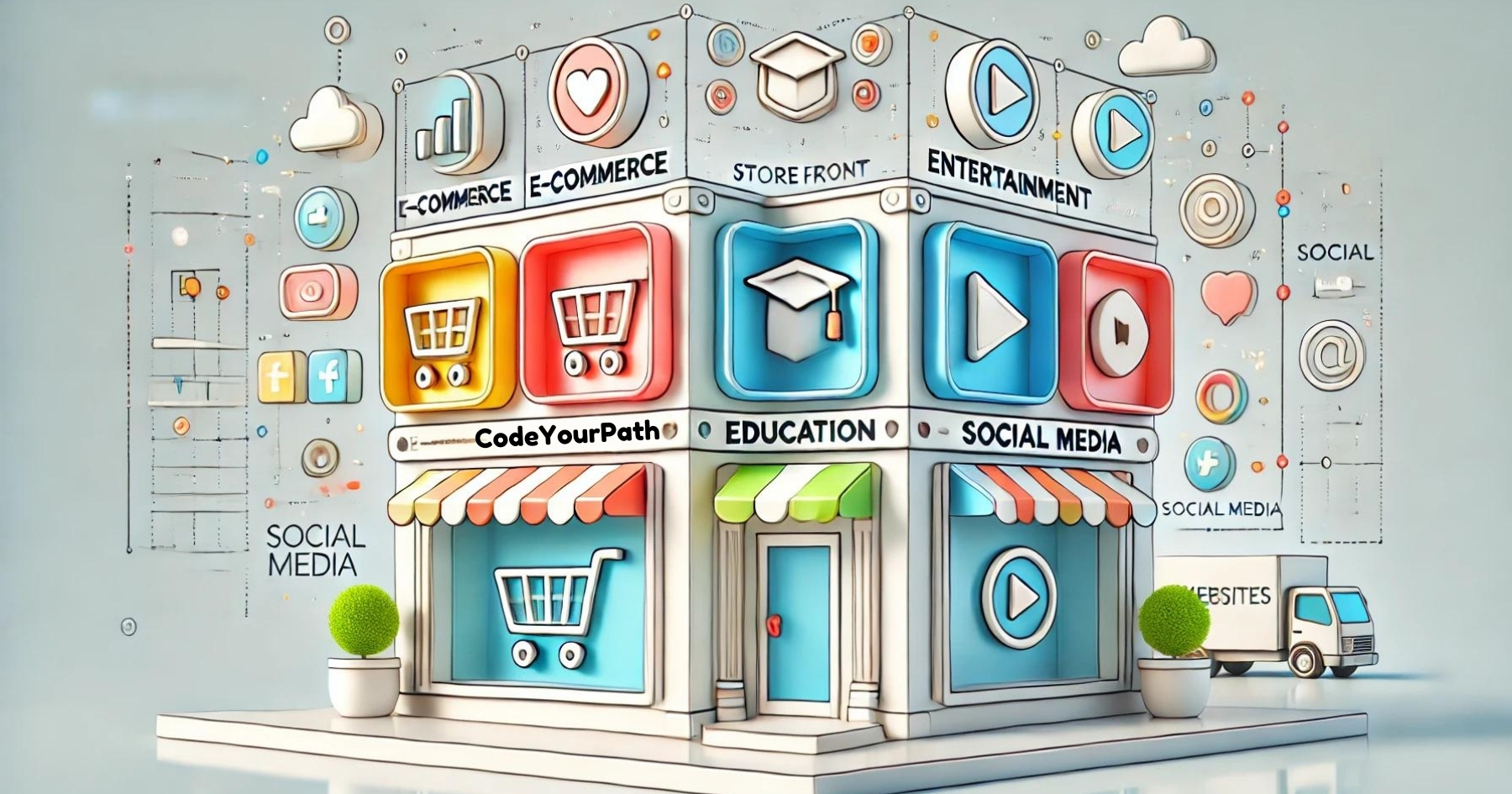Curriculum
ReactJS Foundations — Start Your Coding Journey
Introduction to Web development
0/17-
What is Web Development?
-
Homework: What is Web Development?
-
Quiz: What is Web Development QUIZ
-
The Evolution of the Web: A Brief History
-
Homework: The Evolution of the Web: A Brief History
-
Quiz: The Evolution of the Web: A Brief History
-
How the Internet Works
-
Homework: How the Internet Works
-
Quiz: How the Internet Works
-
Understanding Web Browsers
-
Homework: Understanding Web Browsers
-
Quiz: Understanding Web Browsers
-
What is a Website?
-
Homework: What is a Website
-
Quiz: What is a Website
-
Client-Side vs. Server-Side Development
-
Quiz: Client-Side vs. Server-Side Development
Core Web development tools
0/21
Text lesson
What is Web Development?
What is Web Development?
Ready to dive into the wild world of web development? It’s like building a digital house that people can visit and interact with online. Web developers are the architects and builders of the Internet. Let’s break it down, shall we?
Web development is all about creating websites and web apps. It’s the secret sauce that makes the internet tick. Think of it as the behind-the-scenes magic that turns boring code into those awesome sites you use every day.
Why’s it such a big deal? Well, in today’s digital age, everything’s online. From ordering pizza to binge-watching your fave shows, it’s all thanks to web dev. It’s the backbone of our online lives, no cap!
And here’s the kicker – web development isn’t just for tech geeks. It’s for EVERYONE! Whether you’re a creative soul or a logic lover, there’s a place for you in this field. So, buckle up, ’cause we’re about to embark on an epic journey into the world of web development!

Introduction to Web Development
Alright, let’s get down to brass tacks. What exactly is web development? It’s the process of building and maintaining websites. Simple as that, right? But wait, there’s more!
Web development is like cooking up a digital feast. You’ve got your ingredients (code), your recipe (design), and your final dish (the website). It’s all about creating something that looks good and works smoothly.
Why’s it so important? Well, in today’s world, having a killer website is like having a superpower. It’s how businesses reach customers, how we connect with friends, and how we share our ideas with the world. Pretty neat, huh?
Web Development vs. Software Development
Now, you might be thinking, “Isn’t web development just software development?” Well, not quite, my friend. Let’s break it down:
| Web Development | Software Development |
| Focuses on websites and web apps | Covers all types of software |
| Primarily uses web technologies (HTML, CSS, JavaScript) | Uses a wider range of programming languages, including JS (Node.js) |
| Typically runs in web browsers | Can run on various platforms (desktop, mobile, etc.) |
|
Faster development and deployment cycles
|
Often longer development cycles
|
| Often involves more visual design | May involve more complex algorithms |
|
Needs to consider cross-browser compatibility
|
Focuses on compatibility with specific operating systems
|
See the difference? Web development is like the cool cousin of software development. It’s more focused on creating stuff for the web, while software development is a broader field.
But here’s the thing – they’re not totally separate. There’s a lot of overlap, and many developers wear both hats. It’s like being bilingual in the coding world. Pretty sweet, right?
So, whether you’re into web dev or software dev, you’re part of the same awesome tech family. High five! ✋
Web Development is for Everyone
Now, listen up, ’cause this is important. Web development isn’t just for computer whizzes or math geniuses. It’s for everyone, and I mean EVERYONE!
You might be thinking, “But I’m not a tech person!” Well, guess what? Neither was I when I started. Web development is like a big old playground where everyone’s invited to play.
Are you creative? Awesome! You can design beautiful websites. Logical thinker? Sweet! You’ll love solving coding puzzles. People person? Perfect! You can work on user experience.
A student named July was afraid of coding. However, after trying web development, she discovered her hidden talent for design. Now she’s a successful web designer, creating stunning websites for big brands.]
See? Anyone can do it. All you need is curiosity and a willingness to learn. So don’t let anyone tell you that you can’t do it. You’ve got this, fam!
The Two Sides of Web Development
Alright, buckle up! We’re about to split web development into two juicy halves. It’s like the yin and yang of the digital world.

On one side, we’ve got front-end development. This is the pretty face of web development. It’s all about what users see and interact with. Think of it as the digital makeup artist, making everything look fab.
On the flip side, we’ve got back-end development. This is the brains of the operation. It’s all the behind-the-scenes stuff that makes websites work smoothly. It’s like the wizard behind the curtain, pulling all the strings.
And you know what’s cool? Some developers do both! They’re called full-stack developers. They’re like the Swiss Army knives of web development.
So, whether you’re into making things look good or making things work well, there’s a place for you in web development. It’s like a buffet – you can pick what you like!
Front-End Development
Let’s chat about front-end development, shall we? It’s the rockstar of web development, always in the spotlight.
Front-end developers are like digital artists. They use HTML, CSS, and JavaScript to create the stuff you see on websites. It’s all about making things look good and work smoothly.
These cool cats focus on:
- Creating layouts
- Designing user interfaces – UI
- Making websites responsive (so they look good on any device)
- Adding cool animations and effects
It’s a mix of creativity and technical skills. You get to play with colors, fonts, and layouts, but you also need to know your code.
Back-End Development
Now, let’s peek behind the curtain at back-end development. This is where the real magic happens, folks!
Back-end developers are like the backstage crew at a concert. You don’t see them, but without them, the show can’t go on. They work with:
- Servers
- Databases
- APIs (Application Programming Interfaces)
These coding ninjas make sure that:
- Data is stored safely
- Websites can handle lots of users
- Everything runs smoothly behind the scenes
It’s all about problem-solving and logical thinking. If you love puzzles and figuring out how things work, back-end development might be your jam!
Main Differences Between Front-End and Back-End Development
Let’s break down the key differences between front-end and back-end development:
- Visibility: Front-end is what users see and interact with. Back-end works behind the scenes.
- Focus: Front-end deals with user experience and design. Back-end handles data and server-side operations.
- Languages: Front-end uses HTML, CSS, and JavaScript. Back-end uses languages like Python, Ruby, or PHP.
- Frameworks: Front-end uses frameworks like React or Angular. Back-end uses frameworks like Django or Ruby on Rails.
- Skills: Front-end requires creativity and design skills. Back-end needs strong logical and problem-solving abilities.
- Interaction: Front-end interacts directly with users. Back-end interacts with databases and servers.
- Updates: Front-end changes are immediately visible. Back-end changes often happen without users noticing.
Remember, both are crucial for a fully functional website. They’re like the yin and yang of web development – different but equally important!
|
Aspect
|
Front-End
|
Back-End
|
|
Focus
|
User interface and experience
|
Server-side logic and databases
|
|
Languages
|
HTML, CSS, JavaScript
|
Node.js, Python, Ruby, PHP, Java, etc.
|
|
Frameworks
|
React, Angular, Vue
|
Express.js, Django, Ruby on Rails
|
|
Visible to User
|
Yes
|
No
|
|
Deals with
|
Design, layout, interactivity
|
Data processing, security, APIs
|
|
Skills Needed
|
Creativity, design sense
|
Logic, problem-solving
|
The Role of Full-Stack Development
Alright, let’s talk about the superheroes of web development – full-stack developers!
These folks are like the Swiss Army knives of coding. They can do it all, from front-end to back-end. It’s like being bilingual in the web world.

Full-stack developers:
- Understand both client-side (Front-end) and server-side (Back-end) programming
- Can work on all layers of a web application
- Are versatile and adaptable
But here’s the thing – being a full-stack dev DOESN’T mean you’re better than front-end or back-end devs. It’s just a different path. Some people prefer to specialize, and that’s cool too!
The Importance of Web Development in Today’s World
Listen up, ’cause this is the real deal. Web development isn’t just some techy hobby – it’s shaping our world!
In today’s digital age, websites are like the new storefronts. They’re how businesses reach customers, how we connect with friends, and how we share ideas. It’s wild!
Web development impacts:
-
Business: E-commerce is booming! According to Statista, global e-commerce sales hit $4.9 trillion in 2021. That’s all thanks to web dev, folks!
-
Education: Online learning platforms like Coursera had over 92 million learners in 2021. Web dev makes education accessible to everyone.
-
Communication: Social media platforms connect billions of people worldwide. Facebook alone had 2.9 billion monthly active users in 2021.
-
Healthcare: Telemedicine visits increased by 50% in the first quarter of 2020, according to CDC data.
-
Entertainment: Streaming services like Netflix (231 million subscribers in 2022) are changing how we consume media.
And get this – the demand for web developers is skyrocketing. According to the U.S. Bureau of Labor Statistics, web developer jobs are expected to grow 13% from 2020 to 2030. That’s faster than average, folks!
So, whether you want to build the next big social media platform or just create a cool personal blog, web development skills are your ticket to the future. It’s not just a job – it’s a superpower!
The Impact of Web Development on User Experience
Alright, let’s discuss how web development can make or break your online experience. It’s like the secret ingredient in your favorite recipe—you might not see it, but boy, you do taste it!
Good web development is like a smooth road trip. Everything just works, y’know? Bad web development? It’s like hitting every pothole on the way.
Here’s the deal:
- Fast loading times? That’s good web dev.
- Easy-to-use menus? Yep, web dev again.
- Sites that look great on your phone AND computer? You guessed it – web dev!
And get this—web development isn’t just about making things pretty. It’s about making sure everyone can use the web, including folks with disabilities (accessibility). It’s like building ramps alongside stairs—everyone gets in!
For businesses, good web development is like having a star employee. It keeps customers happy and coming back for more. Ka-ching! 💰
Common Challenges and Solutions
Let’s face it, learning web development is tough. It’s like learning a new language, but instead of talking to people, you’re talking to computers. Weird, right?
But don’t sweat it! Every developer, even the pros, faced challenges when they started. The key is to keep pushing forward, one line of code at a time.
In this section, we’ll tackle some common hurdles you might face. We’ll bust some myths, share tips on how to learn effectively and discuss keeping up with all the new tech stuff.
Remember, every challenge is just a chance to level up your skills!
Misconceptions about Web Development
Alright, let’s bust some myths! There are a lot of wacky ideas out there about web development. Let’s set the record straight:
- “You need to be a math whiz” – Nope! Basic math is enough.
- “You need to be young to start” – No way! People of all ages can learn web development.
- “It’s a man’s field” – Absolutely not! Web development welcomes everyone, regardless of gender.
- “It’s all about coding” – Wrong! Design and problem-solving, andcommunication are just as important.
- “You need a computer science degree” – Not true! Many successful devs are self-taught.
- “It’s a solitary job” – No way! Teamwork is crucial in web dev.
- “You have to know everything” – Impossible! Even pros are always learning.
- “You need to memorize all the code” – Nope! Good developers know how to find info, not memorize everything.
-
“You’ll get rich quick” – Slow down! Success takes time and hard work.
These myths can hold you back — don’t let them!! Remember, web development is a journey, NOT a destination.
Overcoming the Learning Curve
Learning web development can feel like climbing a mountain. But don’t worry, I’ve got some tricks to make that climb easier:
- Start small — Build simple projects first.
- Practice daily — Even 30 minutes a day makes a difference.
- Join coding communities — Learn from others and share your progress.
- Use online resources — There are tons of free tutorials out there.
- DON’T be afraid to ask for help — Everyone was a beginner once!
Remember, it’s okay to feel overwhelmed sometimes. That’s just your brain growing! Keep pushing, keep learning, and before you know it, you’ll be coding like a pro.
Staying Up-to-Date with Rapidly Changing Technologies
Alright, real talk time. Web tech changes faster than fashion trends. It can feel like you’re always playing catch-up. But don’t stress! Here’s how to stay in the loop:
- Follow tech blogs and news sites
- Join web dev communities on social media
- Attend webinars and online conferences
- Experiment with new tools and frameworks
- Contribute to open-source projects
The key is to focus on the fundamentals. Languages and frameworks may change, but problem-solving skills are forever.
Remember, you don’t need to know everything. Pick a few areas to specialize in, and keep an eye on the big picture for the rest.
Recap and Summary
Alright, fam, let’s take a breather and look back at what we’ve covered. We’ve been on quite a journey through the world of web development!
We’ve explored what web development is, how it’s different from software development, and why it’s such a big deal in today’s world.

We’ve also peeked into the front-end and back-end sides of things and even talked about full-stack development. Let’s do a quick rundown of what we’ve learned:
- Web development is about creating websites and web applications
- It’s different from software development, focusing specifically on web-based projects
- Web development is accessible to people from all backgrounds
- It’s divided into front-end (what users see) and back-end (behind-the-scenes stuff)
- Full-stack developers work on both front-end and back-end
- Web development is crucial in today’s digital world, impacting various industries
- It significantly affects user experience (UX) and business success
- The field is constantly evolving, requiring continuous learning
Remember, these are the building blocks of your web development journey. Keep them in mind as you continue learning!
